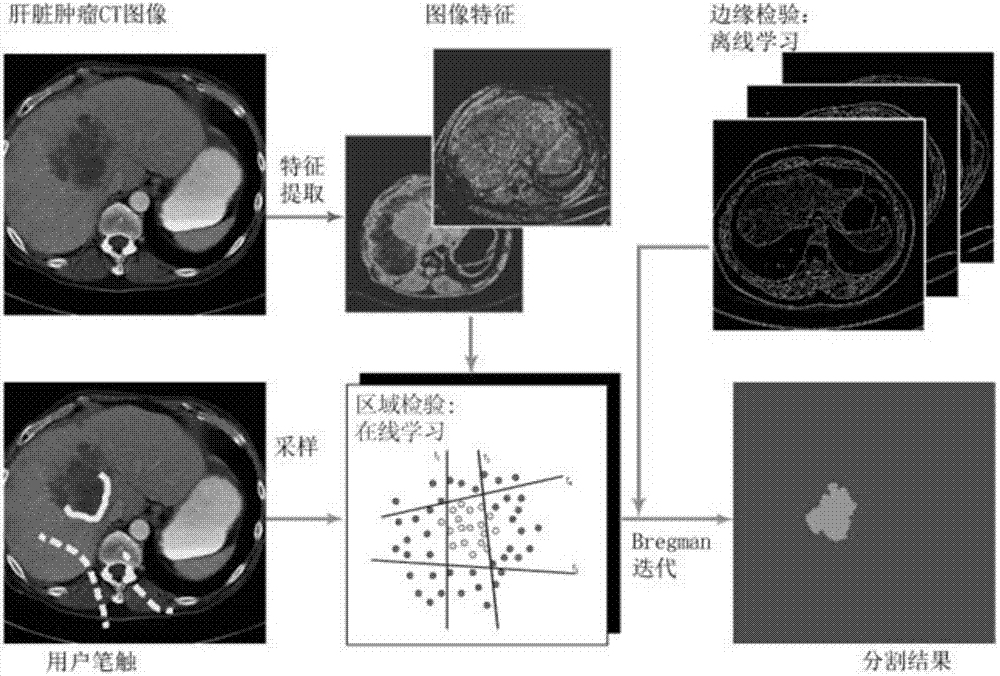Captive test (CT) image partitioning method based on adaptive learning
A self-adaptive learning, CT image technology, applied in image analysis, image data processing, instruments, etc., to overcome the problem of misclassification, fast segmentation, and improve segmentation effect and efficiency.
- Summary
- Abstract
- Description
- Claims
- Application Information
AI Technical Summary
Problems solved by technology
Method used
Image
Examples
Embodiment Construction
[0038] specific implementation plan
[0039] figure 1It is a system block diagram of the present invention. First, the user marks strokes on the lesion area and non-lesion area on the CT image, and then the system extracts the local grayscale histogram and local SIFT histogram from the image as feature vectors, and uses the pixels on the user's strokes Points are used as training sample points, and the classifier is trained by machine learning method; then the classifier is tested on all pixels on the CT image to obtain the regional item score, and the edge information of the image is iteratively fused using Bregman, and finally the segmentation map of the image is obtained.
[0040] In the segmentation problem of CT images, the goal is to separate the lesion area displayed in the CT image from other non-lesion areas, that is, to divide the CT image into two areas. Let the area marked with lesion area be the foreground R+, and the area marked with non-lesion area be the back...
PUM
 Login to View More
Login to View More Abstract
Description
Claims
Application Information
 Login to View More
Login to View More - R&D
- Intellectual Property
- Life Sciences
- Materials
- Tech Scout
- Unparalleled Data Quality
- Higher Quality Content
- 60% Fewer Hallucinations
Browse by: Latest US Patents, China's latest patents, Technical Efficacy Thesaurus, Application Domain, Technology Topic, Popular Technical Reports.
© 2025 PatSnap. All rights reserved.Legal|Privacy policy|Modern Slavery Act Transparency Statement|Sitemap|About US| Contact US: help@patsnap.com



